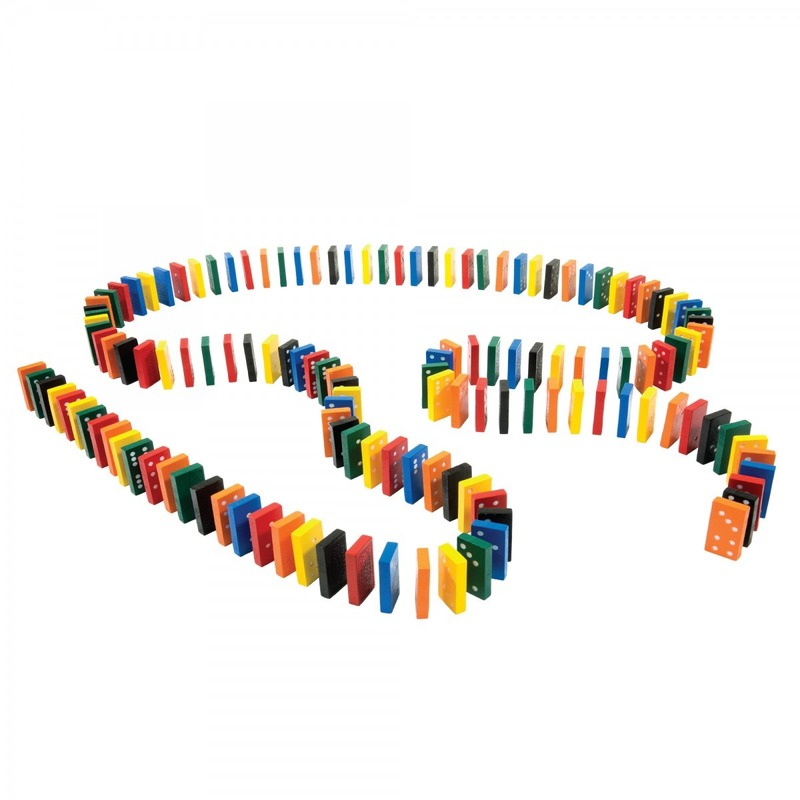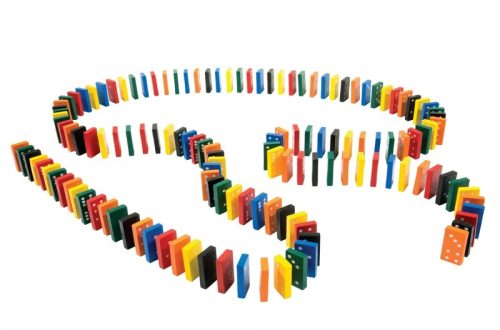Introduction to Dominoes
Dominoes is a classic game beloved around the world. It consists of rectangular tiles, often called bones. Each tile has two square ends, marked with a number of spots, known as pips. A domino set, also known as a deck or pack, usually contains 28 pieces. People of all ages enjoy dominoes for its simple rules and engaging gameplay. Learning how to play basic dominoes can bring hours of fun. It’s also a great way to sharpen your strategic thinking and math skills. This guide will help you understand the basics. You’ll be ready to start playing in no time. Let’s dive into the world of dominoes and uncover the joy of this timeless game.
The History and Origin of Dominoes
The game of dominoes has a storied past. Its roots trace back to ancient China. Historians believe the game appeared in the 12th century. Through trade routes, it spread to Europe in the 18th century. Early European versions saw variations in the tiles and rules. The game evolved as it moved from culture to culture. Today’s traditional 28-piece set became popular in the 1700s. Back then, it was often hand-carved from bone or ivory. Nowadays, we use a variety of materials, including plastic and wood. The word ‘domino’ might come from the Latin ‘dominus.’ It means master or lord. Some say it relates to the black and white priest’s cape in Europe. Each set of pips symbolized different values. This made the game easy to learn but challenging to master.
When you learn how to play basic dominoes, you join a rich tradition. This game has stood the test of time, bringing people together for centuries. As you play, think of the countless players before you. They too enjoyed the strategic depth of dominoes. Whether for fun or competition, dominoes offers something for everyone. Next, we’ll look at what you need to start your own dominoes journey.
Essential Equipment for Playing Dominoes
To begin your dominoes adventure, you need the right equipment. It’s simple: a domino set is essential. As noted earlier, a standard domino set includes 28 tiles. Each player picks from these to play the game. Make sure your set’s tiles are uniform and have visible pips. This ensures fair play for all participants.
You might also need a flat surface. A table or a smooth floor area works well. It’s important the space is stable. This keeps the dominoes from tipping over accidentally during play. Some players use a score pad for keeping track. This isn’t a must, but it’s handy for serious or competitive games. If you play versions like ‘Mexican Train,’ you might need additional markers.
When selecting your equipment, consider durability and readability. Wooden dominoes last for years and have a classic feel. Plastic sets are lightweight and often more affordable. But ensure the pips contrast against the background for easy reading. Remember, the joy is in the game itself. Just gather your dominoes, find a comfortable spot, and get ready to play. In the next section, we’ll tackle the fundamental rules to keep in mind.
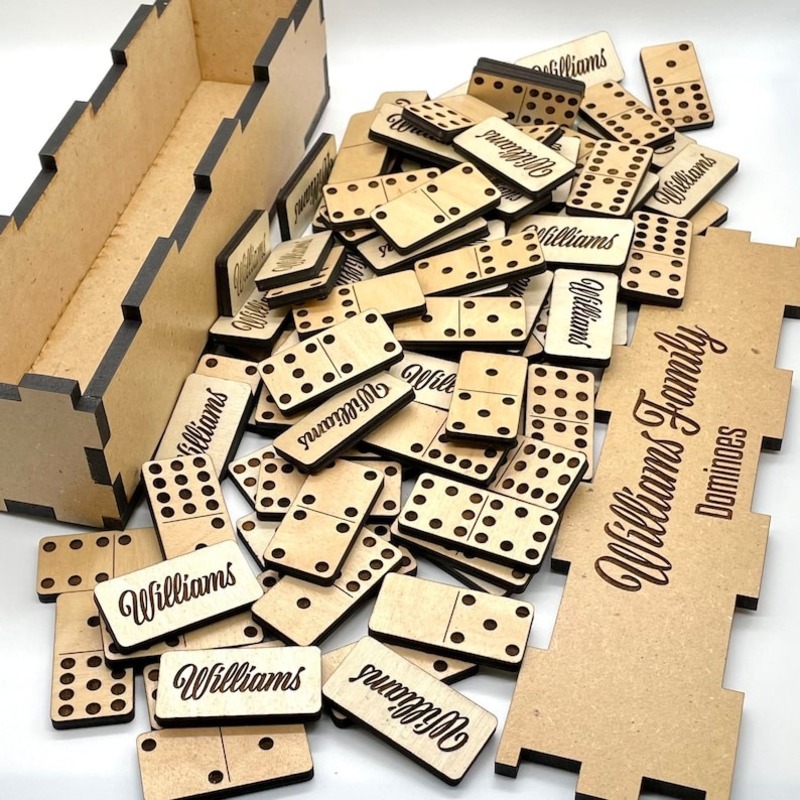
The Fundamental Rules of Dominoes
Understanding the fundamental rules is key when learning how to play basic dominoes. The basics of the game are easy to grasp.
First, shuffle the dominoes face down on the table. This mixes the tiles up. Each player then draws a set number of tiles to form their hand. In most games, the number of tiles starts at seven.
Players take turns placing a tile onto the table. The key is to match one end of their domino with one of the open ends of the dominoes chain. Play continues with each person connecting tiles with matching numbers of pips.
If a player cannot match any pips, they draw from the boneyard. The boneyard is the pile of unused tiles. If there are no tiles left to draw, they pass their turn to the next player.
The round ends when a player places all of their dominoes or no more moves are possible. Points are then tallied. The player with the fewest pips on their remaining tiles adds the total number of pips left in their opponents’ hands to their own score.
The game proceeds to subsequent rounds. It ends when a predetermined number of rounds complete or a set score is reached.
Remember these simple yet crucial rules: shuffle tiles, draw your hand, play by matching pips, draw from the boneyard if stuck, and count points when a round ends. With these guidelines in mind, you’re set to start playing and enjoying the strategic world of dominoes.
Setting Up the Game
Before you start playing, you need to set up the game properly. This includes shuffling the dominoes, drawing your tiles, and deciding who goes first.
Start by placing all the dominoes face down on a flat surface. Shuffle them by moving them around with your hands. This process ensures a random mix, giving each player an equal chance at drawing good tiles. Shuffling also helps to prevent any player from memorizing the tiles’ positions.
Next, each player draws a specific number of dominoes to create their hand. In most basic games, this number is seven. Make sure to keep your tiles hidden from your opponents. This adds an element of surprise and strategy to the game.
Determining who goes first can be done in several ways. One common method is to have each player draw a single tile; the player with the highest number of pips goes first. Alternatively, some players prefer to simply roll a dice or use a random method for fairness.
Once the first player is decided, they place their chosen tile face up in the center of the playing area. This tile starts the domino chain and gameplay flows from here.
Remember, the space where you play should be large enough to accommodate the growing chain of dominoes. It’s helpful to keep some extra space for the boneyard — the pile of unselected dominoes. Keeping these steps in mind, you’re now ready to begin the game. With the dominoes set and players at the ready, it’s time to delve into playing and strategizing to win at dominoes. The next section will help you with strategies to improve your gameplay.
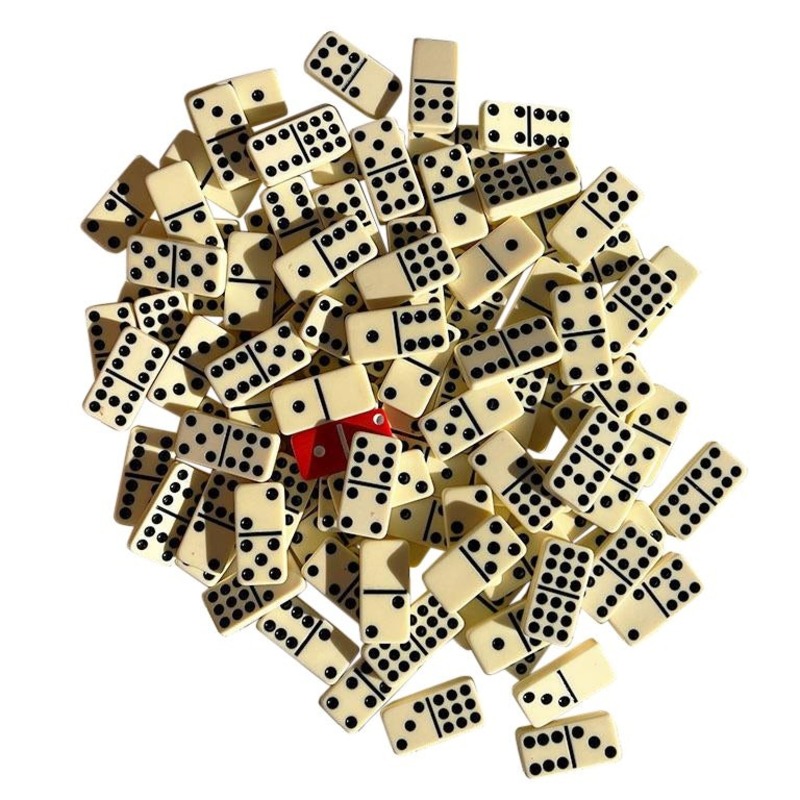
Strategies to Win at Dominoes
When diving into how to play basic dominoes, winning is often the ultimate goal. Here are strategies to boost your chances of victory.
Understand the Game and Opponents
Begin by mastering the basics. Know each domino’s value and the rules. Watch your opponents. Learn from their moves and adjust your strategy.
Keep a Balanced Hand
Try to keep a mix of different numbers in your hand. This gives you more options for play.
Control the Board
Aim to make plays that limit your opponent’s options. Block their moves when you can.
Save Your Doubles
Hold onto doubles as long as possible. They can be harder to play later in the game.
Manage Your Tiles Wisely
Plan ahead. Think about your future moves. Don’t just play what fits; strategize!
Count the Tiles
Keep track of the tiles played. Knowing what’s left can help you predict your opponents’ hands.
Score Points Early
In scoring games, secure points early. This can put pressure on your opponents.
With these strategies in mind, practice to refine your skills. The more you play, the better your chances of winning. Remember, practice makes perfect in the world of dominoes.
Common Variations of Domino Games
Learning how to play basic dominoes is just the beginning. Once you master the fundamentals, explore different variations. This keeps the game fresh and exciting. Let’s look at a few common versions you can try.
Block Dominoes
Block dominoes is the simplest form and a great starting point for beginners. Each player draws seven tiles. The goal is to empty your hand by matching the pips on the board. The game ends when a player has no tiles left or no more moves can be made.
Draw Dominoes
Draw dominoes is similar to Block but adds a twist. If you can’t make a play, you draw tiles from the boneyard until you can. This can change the game’s course and requires adaptability.
Mexican Train
Mexican Train starts with a double. Players build their own line of dominoes, called a train. You can also play on other players’ trains if they are marked as open. This version is social and adds layers of strategy.
Chicken Foot
In Chicken Foot, the key move is making a ‘chicken foot’ by playing three dominoes on a double. This opens up the game in new directions. Players must finish the foot before moving on.
Each game variant has its own charm and challenges. Try them with friends or family to see which one suits you best. Remember, the essence of how to play basic dominoes applies to all. Knowing the core rules will help you adapt to any style of play.
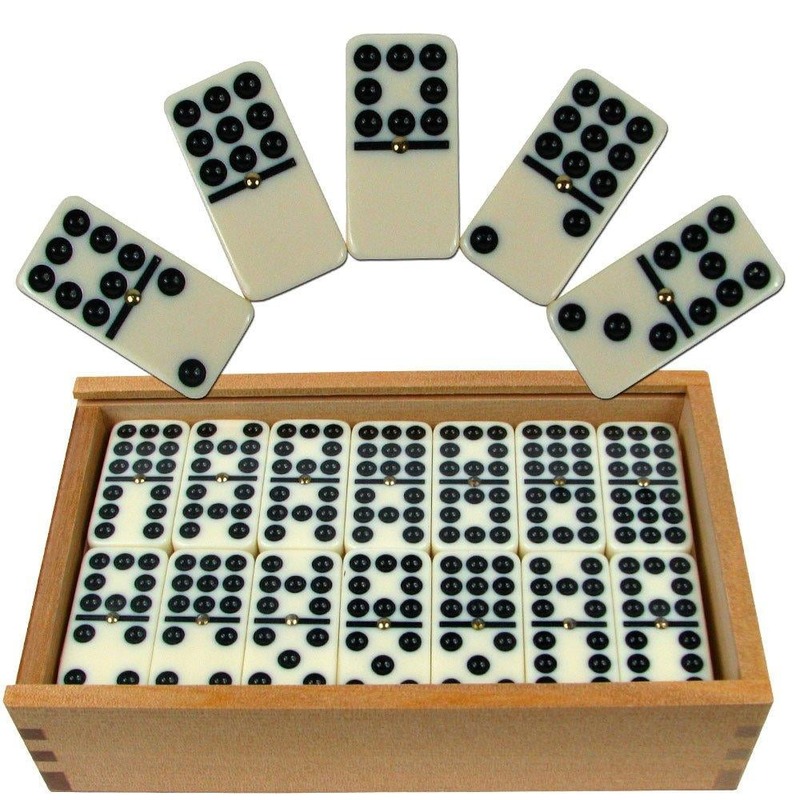
Tips for Beginners
Stepping into the world of dominoes can be exciting and a bit daunting for beginners. Here are some simple tips to get you going on the right track and help you improve your gameplay experience.
Learn the Basic Mechanics
Start by getting familiar with the individual domino tiles and their values. Recognize the pips and understand how tiles connect during play. This is your foundation.
Practice Makes Perfect
The more you play, the better you’ll get. Start by playing simple games with friends or family. This will help you grasp the rules and flow of the game.
Keep it Fun
Remember, it’s a game! Enjoy yourself, be patient, and don’t stress over winning. Fun is the heart of playing dominoes. Keep a light-hearted approach to the game.
Watch and Learn
Observe how more experienced players strategize and play their tiles. Watching others can offer invaluable insights into different play styles and techniques.
Stay Organized
Organize your tiles in a way that you can quickly see your options. Keep your hand easy to read, so you don’t miss a potential play.
Play Defensively
Be aware of the game state. Try to block your opponents if you see a chance. This can be as crucial as making strategic moves to win.
Familiarize Yourself with Variations
Once you are comfortable with basic dominoes, explore different game variations. Understanding multiple versions will expand your skills and enjoyment of the game.
Be Social
Dominoes is as much about social interaction as it is about gameplay. Engage with fellow players, share laughs, and build community.
These tips are meant to guide you as you learn how to play basic dominoes. Apply them diligently, and you will not only enjoy the game but also steadily improve your abilities. Let the fun and games begin!
